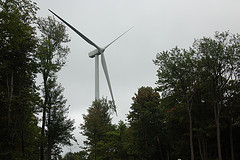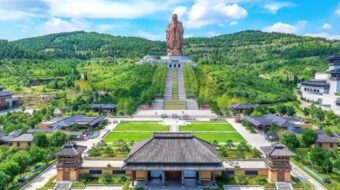
Yesterday, the Institute for America’s Future, headed by Robert Borosage, a progressive policy adviser to many political and labor campaigns, hosted a conference call to hear a report on President Obama’s still ongoing trip to Asia, especially China.
Carolyn Bartholomew, the “moderate” chair of the bipartisan U.S.-China Economic and Security Review Commission, gave a pessimistic review: No movement on exchange. No concessions on the subsidies the Chinese government gives to its “strategic” industries (including “green production”). The commission was established by Congress to assess “growing economic and security concerns between the U.S. and China.”
Also commenting was Clyde Prestowitz, president of the Economic Strategy Institute, a moderate globalization advocate of what he calls “smart globalism” – free markets without cartels and excessive speculation.
The number one message from all is this: China has a national industrial strategy and policy. We do not. And we better come up with one soon.
With the exception of the exchange rate controversy, most objections raised against China are the subsidies it fosters in promoting areas of production where it wants to lead, such as in all areas of “green production and research.”
The current controversy over whether to import Chinese-built wind turbines into stimulus- or TARP-subsidized U.S. alternative energy projects is just one example of the advantage strategic planning has given those nations practicing it in the area of environmental technologies and their integration into national infrastructure planning. After pressure from public outrage over taxpayer funds not being used to build domestic wind turbines, the private equity firm and its Chinese partner building the wind farms reversed course and decided to build a manufacturing plant in the U.S.
This kind of incident is the tip of the iceberg, however, say Bartholomew and Prestowitz. There’s tons of “green production” going on, and it’s screaming ahead of the U.S., especially in China, Germany, Korea and Japan. Tariffs and countervailing duties levied against China can only do so much. Plus, it is difficult to police what domestic companies actually do with the income provided by their tariff protection. There are many scams that merely pay the cost of going out of business in style.
In the current international environment, the only way to really protect jobs and be competitive is to move toward a national industrial economic policy. There was interesting unanimity on this question among Borosage, Bartholomew and Prestowitz. Whether Sen. Charles Schumer, or Steelworker President Leo Gerard, is correct that 100 percent should be spent on employing U.S. labor some may question, since there is also a promise that the stimulus actually deliver the wind farms at an affordable cost and on a meaningful schedule. But no one should question the responsibility of U.S. funds to be spent addressing both immediate and long-term employment opportunity.
One of the reasons why mastering “green production” is so important is that no matter how profitable or useful may be the commodities or services it generates, it is always also generating a side effect of a valuable public good: namely a cleaner, more livable environment.
Transitioning and re-balancing from an overly consumptive society to a more productive one will be a key theme in our relations with China and the rest of the world going forward.
The current battles over China pegging its currency to a (mostly) fixed ratio of the dollar reflects the re-balancing that ultimately must be done on both sides. Chinese consumption must, and will, grow relative to its product. Western economists point to China’s 36 percent consumption (which tracks wage or salary compensation) relative to GDP, vs. roughly 60 percent in the U.S. and Western Europe. The rest is reserved as capital. China’s export-driven economy, and culture of saving, permits it to make huge strategic capital investments it hopes will catapult it into the leadership of the 21st century world economy. If China allowed its currency to float it would undoubtedly rise, making U.S. and other foreign goods cheaper in China, and China’s own exports much more expensive in the U.S. Any sudden shift, however, toward balance would likely greatly aggravate already powerful structural change forces stressing both economies, and the world economy, endangering the fragile economic recovery under way.
Critics hoping for fast redress on China currency disputes should not hold their breath. Nor should they waste it complaining about the advantages of China’s socialism to change direction and mobilize the big forces needed in a structural economic crisis – perhaps we should try on a little “more socialism” ourselves, at least to the extent of deciding to DO GREEN RESEARCH AND PRODUCTION IN THE U.S. SERIOUSLY.
Letting the market do its thing works better when the fundamentals are stable. Reducing commodity consumption, in this writer’s view, does not have to be a reduction in standard of living. Expanding public goods also adds quality of life – for nearly every class of person too. Improvements in parks, recreation, education, shelter, health, transportation, communication, energy enhance our life every bit as much as a second house at the beach, and 20 new financial services offices may provide considerably less value than 20 new publicly supported venues for the arts, sports and entertainment. Answering the question “What is sustainable economic development” cannot be left to financial markets alone, or even in the main, to decide.
Some may think national industrial policy is “pie in the sky”. But – the rest of the world is doing it big time.
Photo: Windmills amid the trees on an Allegheny ridge in Pennsylvania. (PW/Teresa Albano)










